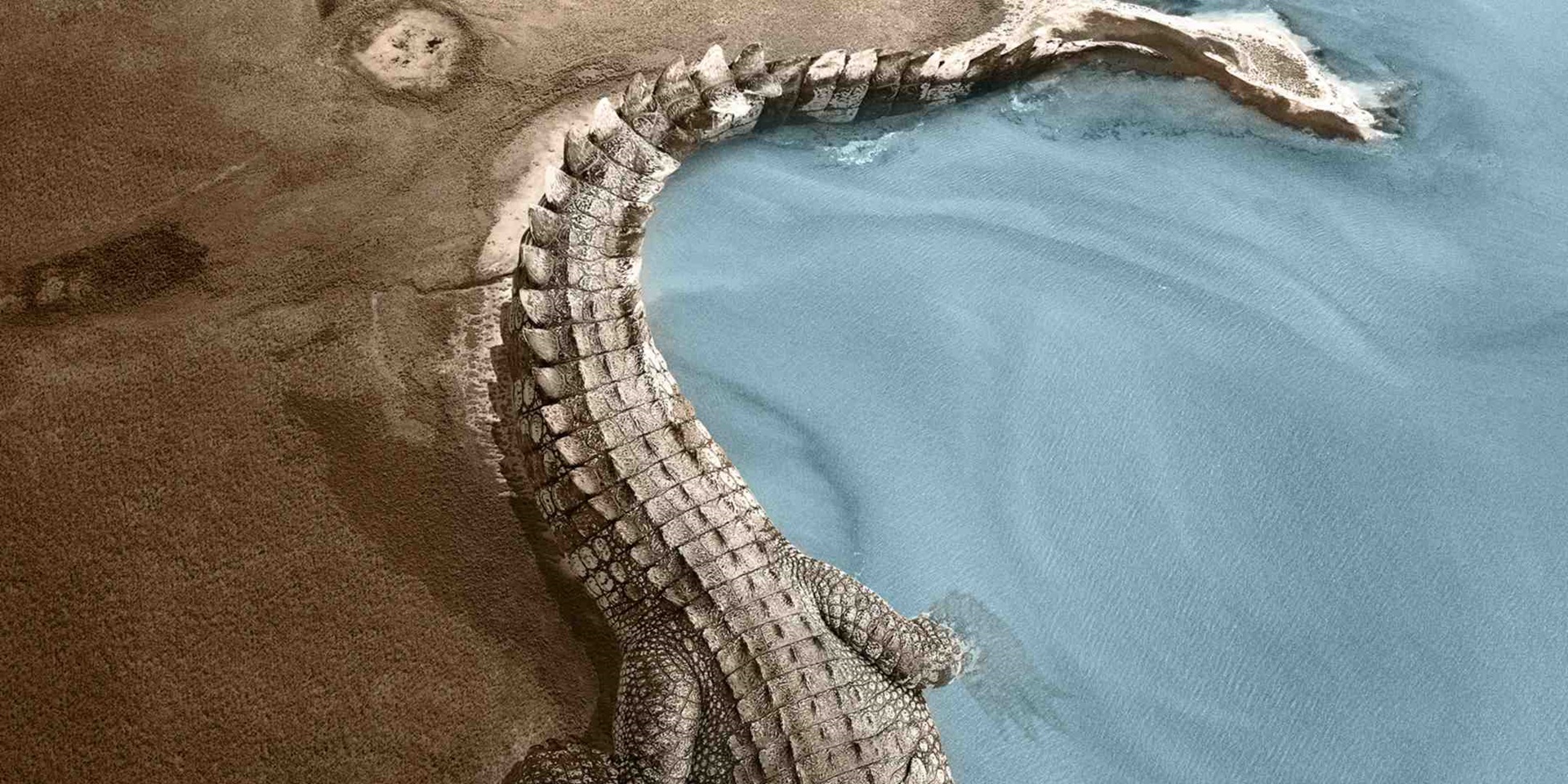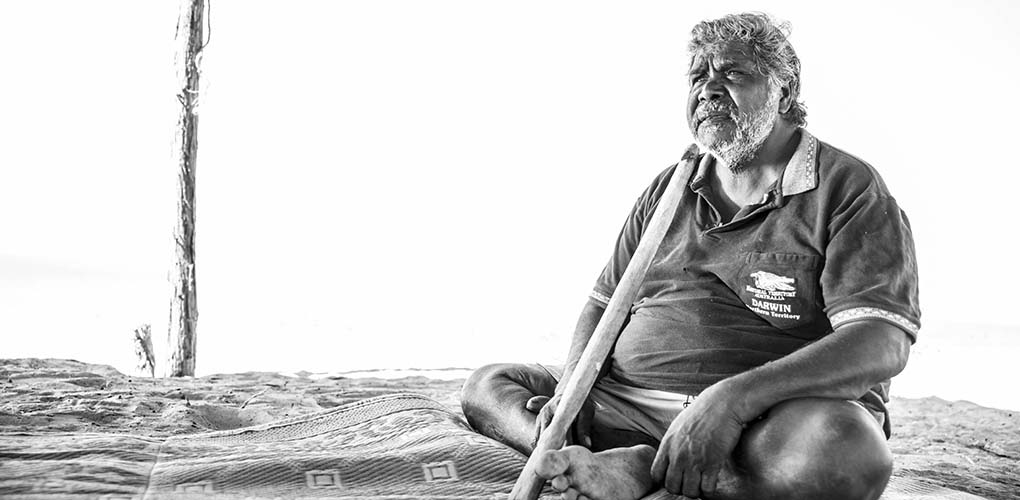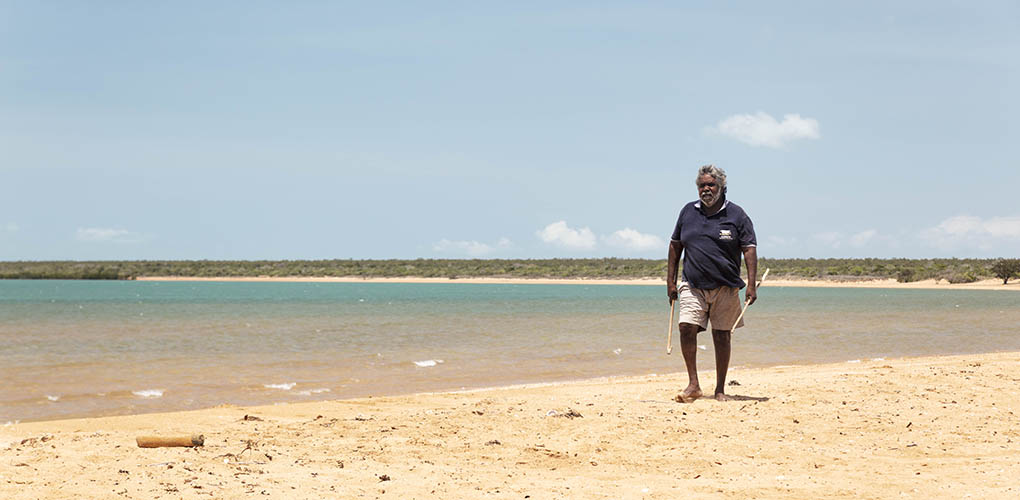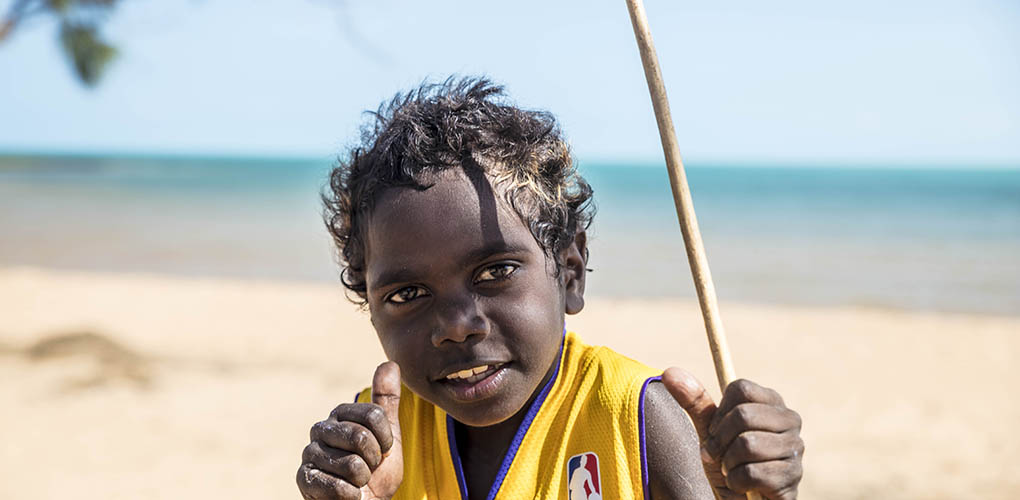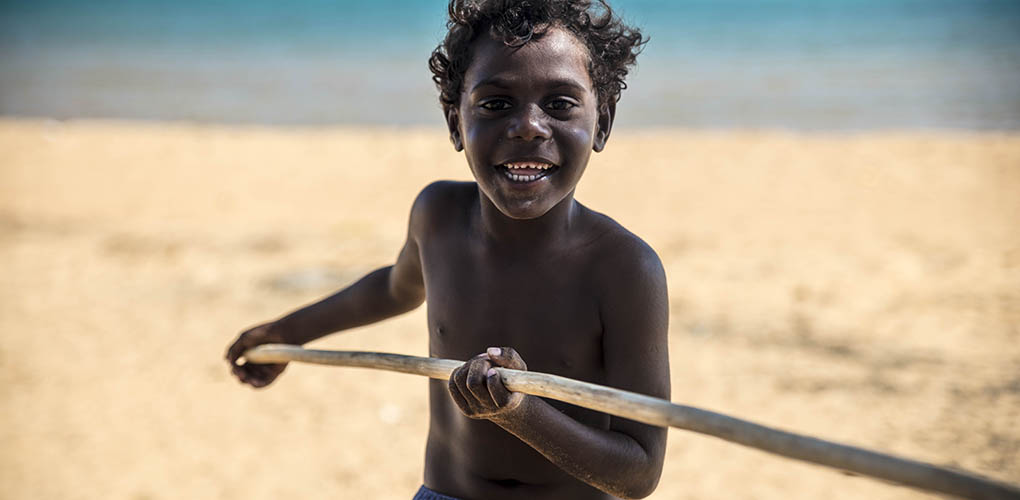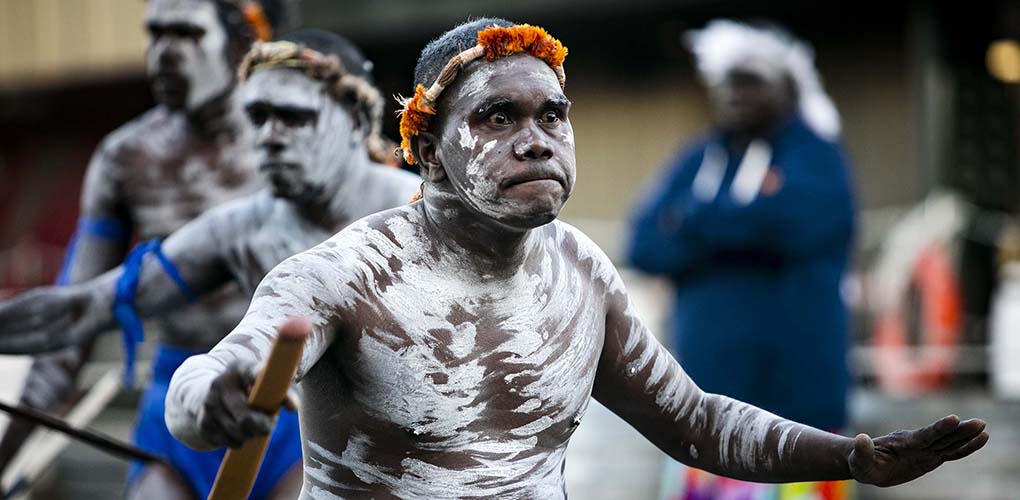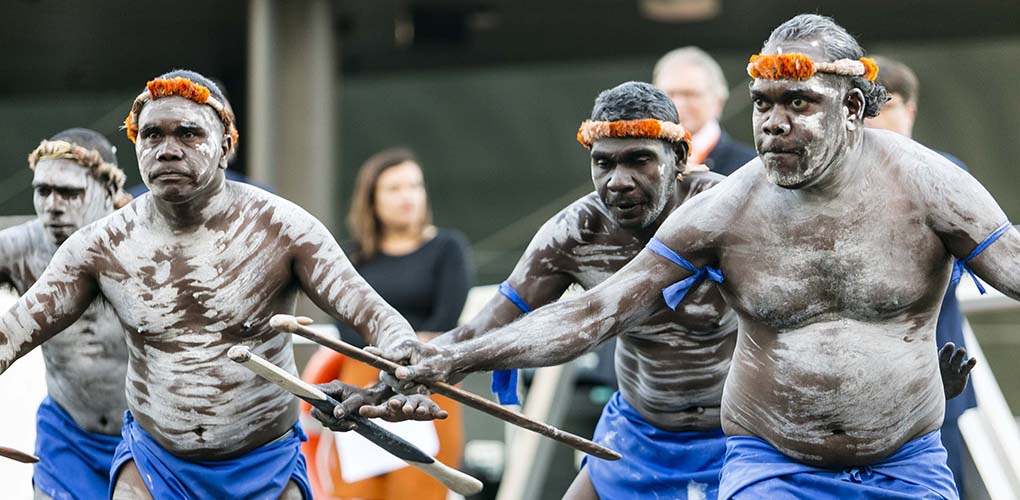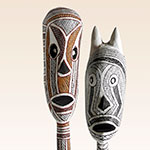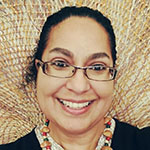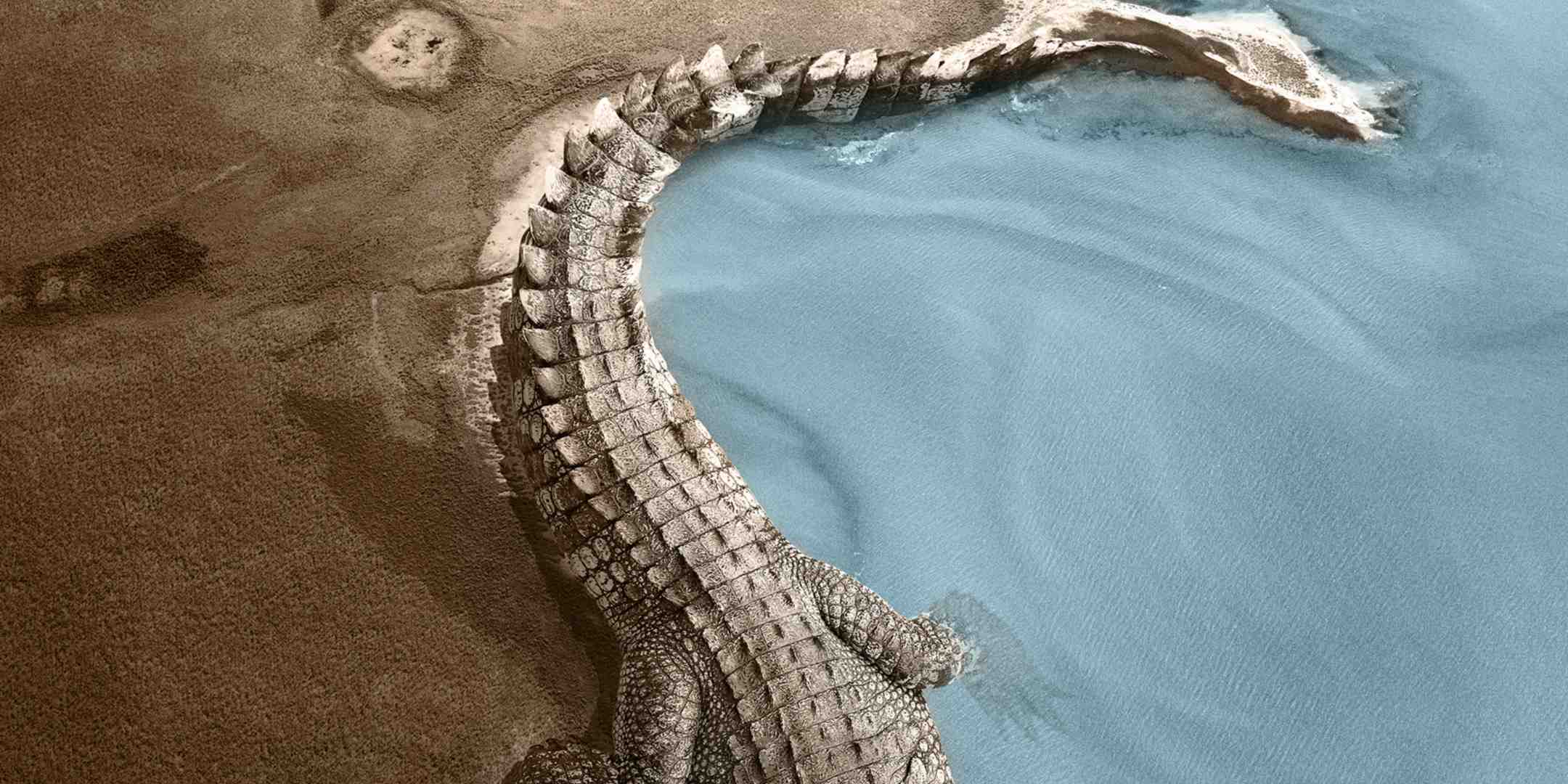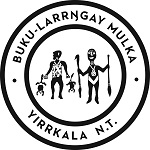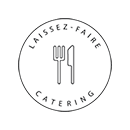"…this exhibit blows away Dior, Bowie, Mapplethorpe – ALL of it.
And it's ours from the Yolŋu people – their Dreamtime on bark paintings. I'm in total awe!"
Gapu-Monuk
Gapu-Monuk are words from the Yolŋu matha language, of North-East Arnhem Land. Gapu (water), monuk (salt), describes Saltwater.
The Saltwater Collection
The exhibition features Yirrkala bark paintings, created by 47 Yolŋu artists who petitioned for sea rights by painting their Sea Countries onto bark and revealing sacred patterns or designs, known as Miny’tji.
This stunning exhibition also includes Mokuy (spirit) carvings, Larrakitj (mortuary pole paintings on hollowed trees) and other traditional and contemporary works.
Visitors will see a host of vibrant images including ancestral beings, ancient mariners, symbolic icons and a host of spiritual creatures including snakes, crocodiles, fish, turtles and birds, all set against traditional sacred designs representing fresh, tidal and salt water.
A Fight for Recognition
Yolŋu artists from fifteen clans and eighteen homeland communities in North-East Arnhem Land created the sacred paintings in a response initiated by Madarrpa clan leader Djambawa Marawili, AM, in 1997, following his indignation at discovering illegal fishing on a sacred site in his clan estate.
The paintings were deemed the equivalent of title deeds to the sea rights of coastal waters.
Almost a decade later, in July 2008, the High Court of Australia confirmed that traditional owners of the Blue Mud Bay region in North-East Arnhem Land, together with traditional owners of almost the entire Northern Territory coastline, have exclusive access rights to tidal waters overlying Aboriginal land.
"...For there lies stories and songs, feelings. These are our feelings. We can feel the water as it goes out and as it comes in.
That is why we love the saltwater and sea country."
Help Support Indigenous Artists
|
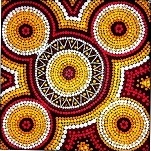
|
The museum store has developed a unique range of Indigenous-made products that speak to the stories and themes in the Gapu-Monuk exhibition. .
You’ll find an assortment of books, kitchenware, unique bark paintings, contemporary sculptures and collectibles when you shop online. The range acknowledges the traditional land owners of Australia, and a percentage of profits are directly endowed to Indigenous communities and artists.
Shop Online
|
Acknowledgement
The Australian National Maritime Museum acknowledges the Yolngu people as the traditional custodians of the lands and waters of northeast Arnhem Land. We pay our respects to them and their elders both past and present.
The Yirrkala bark paintings are held in the ANMM collection and were purchased with the assistance of Stephen Grant of the GrantPirrie Gallery.
The museum would like to advise visitors that this exhibition may contain the names of, and artwork by, deceased Aboriginal or Torres Strait Islander people.
Learn More

WINNER
Indigenous Project or Keeping Place MAGNA Awards 2018
A project or program developed specifically for Indigenous communities or by Indigenous people. May include gallery or exhibition development or interpretive programming and learning projects.
